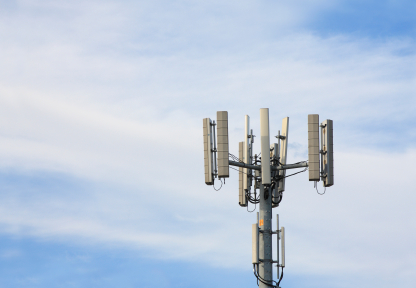
The FCC should regulate like antitrust agencies, providing competition-based ex post remedies.
When Congress passed the Telecommunications Act of 1996, the most significant change to the Communications Act since its adoption in 1934, it was thought by many that the enactment of the new statute meant there would be a meaningful deregulatory shift in communications policymaking in light of the developing marketplace competition. But, unfortunately, there has been no such paradigm shift – which means there is still much work to do to reform our nation’s communications laws and policies.
For most of the twentieth century, the “public interest” model of regulation, which grew out of Progressive-era thinking, dominated communications policymaking. Under this model, much of the Federal Communications Commission‘s regulatory activity was carried out under the Communications Act’s many statutory provisions that simply delegate authority to the agency to act in the “public interest.” The public interest standard, of course, is inherently indeterminate. Indeed, it is often said, with a large measure of truth, that the public interest means whatever three of the five FCC commissioners happen to say it means on any given day. Such an indeterminate standard provides no meaningful check on excessive or unnecessary regulation.
When Congress enacted the Telecommunications Act of 1996, more than a decade after the 1984 breakup of the monopolistic Bell System following Judge Harold Greene’s historic 1982 divestiture decree, competition already was emerging, however slowly, in most segments of the communications and information services marketplace. To a large extent, the steady development of competition in the post-Ma Bell and post-1996 Act environment was attributable to technological advances, especially the transition from analog to digital communications networks and equipment, and from narrowband to broadband services. Thus, as early as December 2000, then-FCC Commissioner Michael Powell, quite accurately, referred to this transition as the “Great Digital Broadband Migration.”
As the new century began, the quickening digital migration, coupled with certain regulatory changes attributable to the 1996 Telecom Act, made it easier for traditional telephone companies, cable and satellite operators, and wireless firms to compete with each other in the provision of voice, video, and data services. For example, employing new broadband networks, traditional “telephone” companies began offering multichannel video services, and “cable television” operators began offering voice services. Both telephone companies and cable operators, along with “cell phone” providers, offered data services over increasingly higher-speed broadband networks. And, before too many years, wireless subscribers began to view videos on what are now called “smart” phones. In the digital world, “convergence,” long a futuristic mantra, became a reality as broadband competitors offered bundled packages of various digitally-delivered services. And, the further reality – a very important one – is that, as each year passed, the power of competition was steadily supplanting monopolistic power in most communications and information services markets.
There was some reason to hope that, after adoption of the 1996 Telecom Act, the FCC would exercise its delegated authority in a way that recognized that marketplace competition lessens the need for regulation, especially the type of “command-and-control” regulation traditionally favored by the agency. After all, Congress emphasized in the 1996 Act’s preamble that the statute was intended “to promote competition and reduce regulation.” The principal legislative report accompanying the new law declared the congressional intent “to provide for a pro-competitive, deregulatory national policy framework.”
There may have been reason for hope, but, alas, the hopes have been dashed. The FCC has been too slow to eliminate, or even reduce, outdated legacy regulation developed during the monopolistic Ma-Bell analog era. The Commission has even extended public utility-style regulations to digital broadband service providers through the adoption of so-called net neutrality mandates.
As explained in my new book, A Call for a Radical New Communications Policy: Proposals for Free Market Reform, Congress needs to make a comprehensive overhaul of the Communications Act in the form of a new free market-oriented model that breaks thoroughly with the past. We do not need just a replacement regime based on a newer (but soon to-be-outdated too) set of techno-functional constructs. The new model, unlike the current one in which the public interest standard plays such a prominent role, would tie the FCC’s regulatory activity closely to a competition standard that incorporates antitrust-like jurisprudence.
Thus, by virtue of the competition standard, the FCC would be required, much more than it is today, to engage in meaningful economic analysis that focuses on market structure. It would be required to determine whether individual service providers subject to complaints possess market power that should be constrained by some form of regulation. Further, unlike the way the agency mostly operates today, it generally would be required to favor narrowly-tailored ex post remedial orders over broad ex ante proscriptions developed in rulemakings. This competition-based, market-oriented model would force the FCC to focus on overall consumer welfare, not on outdated distinctions grounded in particular technology platforms or functional characteristics that just happen to favor one competitor over another without good reason. The Commission no longer would be able to invoke the elastic public interest standard to devise new regulations that have little or nothing to do with existing marketplace realities.
In addition to Congress making these changes in the FCC’s role, the Supreme Court should accord the electronic media essentially the same First Amendment protection accorded to the print media, such as newspapers and magazines. Whatever the rationales that in the past were used to justify differential content restrictions on the electronic media, in the face of proliferating competitive alternatives attributable to profound marketplace and technological changes, it is time for the Court to establish a new First Amendment jurisprudence befitting the media abundance of the twenty-first century’s digital age.
Only with radical changes in communications law and policy will the United States be able to realize the full benefits that enhanced competition in telecommunications can bring to our nation’s consumers, while, at the same time, affording all media companies, regardless of the technological platform they employ, the same First Amendment rights long enjoyed by the print media.




